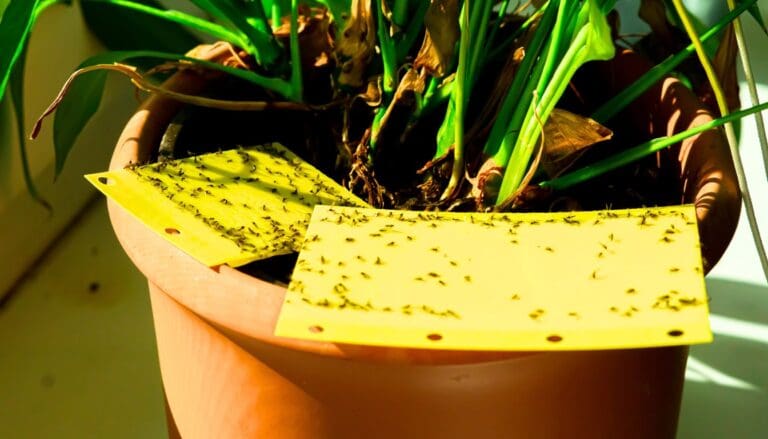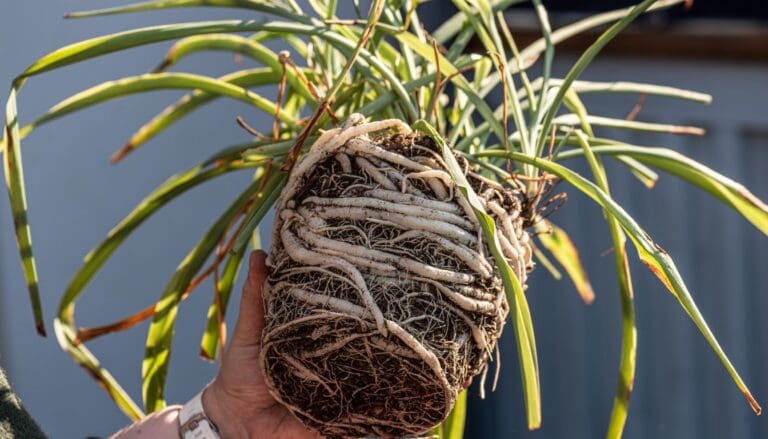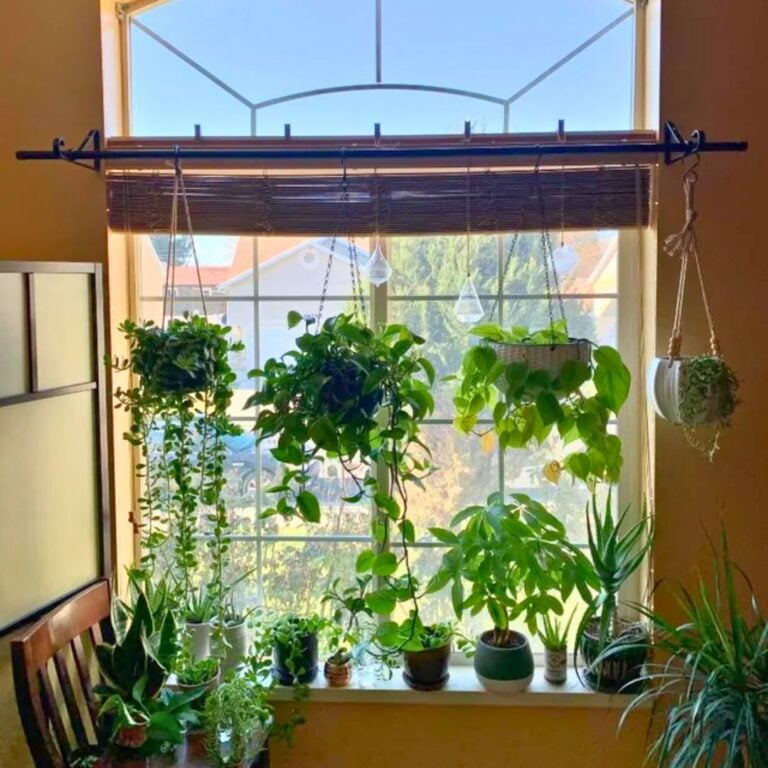4 Things to Do After Repotting a Plant in Hot Weather
Repotting a plant when it’s blazing outside is honestly a bit nerve-wracking, but sometimes it’s just gotta happen if I want my plants to thrive. The heat can really stress them out, so I try to be extra gentle and mindful right after moving them to a new pot.
Taking the right steps after repotting helps my plant recover and settle into its new home. It’s not always perfect, but a little care can make a world of difference.
I want my plant to keep growing, even when the weather feels like an oven. A few simple tricks help it adjust and dodge those classic hot-weather problems.
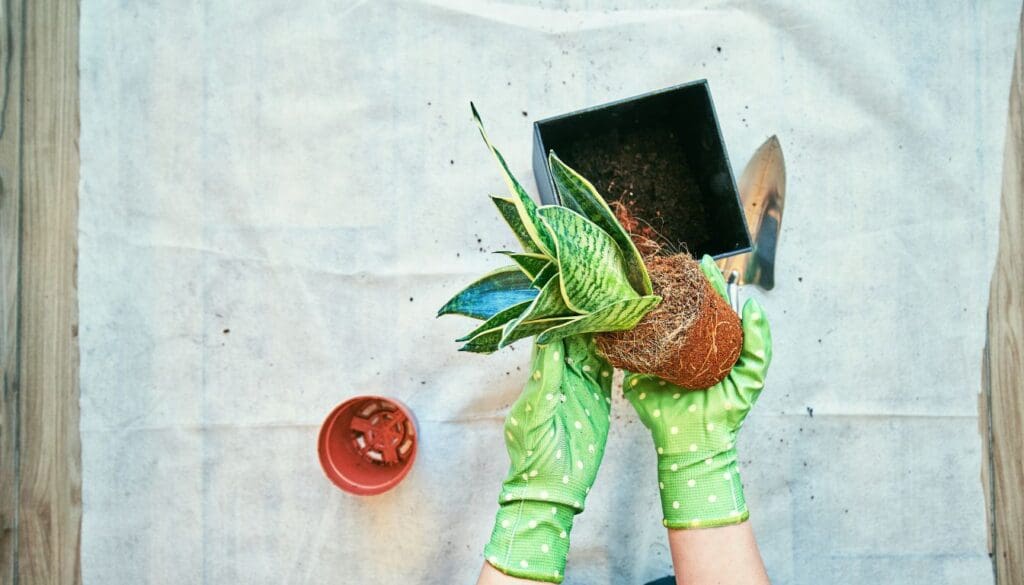
Please note: Simplify Plants is reader-supported. As an Amazon Associate, I earn from qualifying purchases made by our readers with no extra cost added to you all! Some links in the post are affiliate links and I get a commission from purchases made through links in the post.
1) Water the plant thoroughly but avoid waterlogging
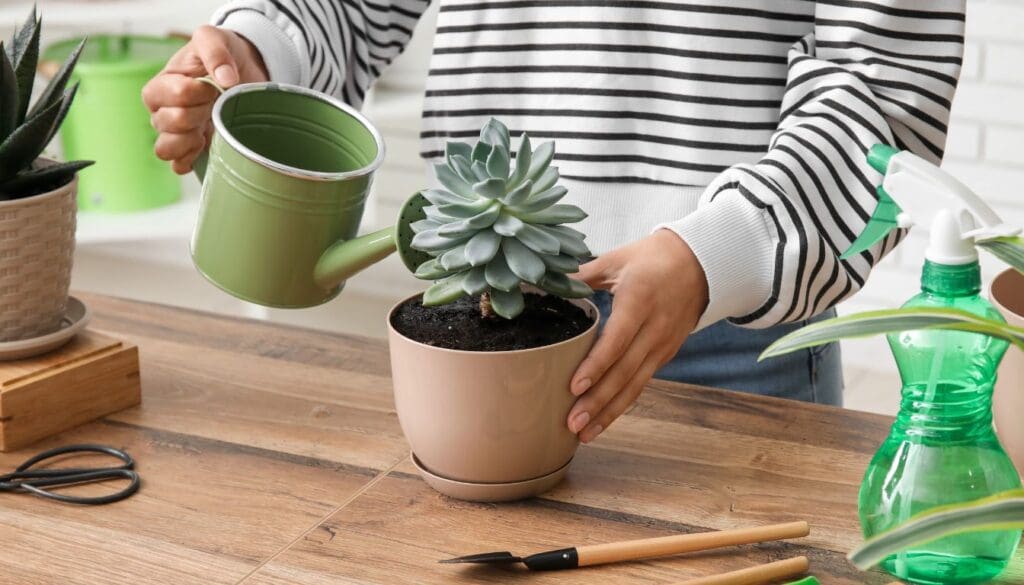
After repotting, I always start by giving the plant a deep drink of water. It’s kind of like a welcome home gift for the roots, helping them settle into their new spot.
I pour water slowly until I see some trickle out the bottom—just enough, not too much.
But I’m careful not to drown it. Too much water can turn the soil into a swamp, and roots really need that balance of air and moisture.
When it’s hot, the soil dries out way faster than usual. I stick my finger down a couple centimeters to check—if it feels dry, I water again. If it’s still damp, I wait.
Room temperature water is my go-to. Cold water can shock the roots, which is the last thing a repotted plant needs.
Gentle watering keeps the roots comfy while they adjust. I never let the pot sit in leftover water; soggy roots are just asking for trouble.
Drainage holes are a must. If the pot has them, I breathe a little easier knowing extra water can escape.
When I see droopy or yellowing leaves, I double-check my watering routine. It’s a balancing act—sometimes it’s too much, sometimes too little. Adjusting as I go keeps my plant happy, even in the heat.
2) Place the plant in partial shade to reduce heat stress

Once I’ve repotted during a heatwave, I make sure not to leave my plant baking in direct sunlight. Full sun can really stress out fresh roots.
I move the plant into partial shade—some light, but nothing harsh. The sun’s rays get filtered or blocked for part of the day, which helps a lot.
Under a tree, on a shaded patio, or beside a wall that blocks the afternoon sun—those are my favorite spots. Sheltered areas give the plant a break and let the roots settle in peace.
When I use shade, I notice the leaves don’t wilt as much, and the soil stays moist longer. That’s a win.
If there’s no natural shade, I improvise with a light cloth or even an umbrella. This extra protection can be a lifesaver on the hottest days.
I keep an eye on the plant to see how it’s handling the move. If it looks happy in the shade, I might slowly ease it back into brighter spots later on.
3) Mist the leaves to increase humidity around the plant

Repotting in the heat can leave leaves looking a bit sad. I like to mist the leaves to help them stay cool and not dry out so fast.
Hot air just sucks the moisture from leaves. Misting gives them a quick drink right where they need it.
I use a clean spray bottle with plain water—nothing fancy. Just a gentle mist so the leaves look a bit dewy, not soaked.
It takes just a few seconds. I usually do it in the morning or early evening, when the sun isn’t blasting.
I don’t mist every plant—succulents, for example, aren’t fans. But leafy houseplants, like pothos or ferns, really appreciate a gentle mist after a hot-weather repot.
Misting helps keep dust off too, so leaves can soak up more sunlight. Clean, happy leaves mean better growth.
If the plant looks a bit droopy, I might mist again. It’s a quick fix that helps recovery after repotting.
4) Check the soil moisture daily to prevent drying out
After repotting in the heat, I make it a habit to check soil moisture every single day. Hot days dry out soil way faster than I expect.
I poke my finger into the soil. If the top inch is dry, it’s time to water. Letting it get too dry right after repotting is just asking for trouble.
Some pots dry out unevenly, so I check both the edges and the center. If I find dry patches, I water those spots a bit more.
I prefer to water in the morning or evening, when it’s cooler. Water soaks in better and doesn’t vanish into thin air.
For bigger pots, sometimes the top looks dry but deeper down it’s still damp. I use a wooden stick to check—if it comes out dry, I know my plant needs more water.
Watching soil moisture daily really keeps my plant happy during the hottest weeks. It’s a small thing, but it matters.

How Hot Weather Affects Newly Repotted Plants
Hot weather makes it tough for new roots to settle in. Plants can get stressed much quicker without a bit of extra care.
Common Signs of Heat Stress
When I repot in hot weather, I keep an eye out for a few classic signs of heat stress. Wilting leaves are usually the first thing I notice, even after a good watering.
Sometimes, leaves turn yellow or get crispy brown edges. That’s never a good sign.
If the pot feels super light and the soil looks cracked or dusty, my plant probably needs water. Soft or limp stems can pop up too if the plant can’t suck up enough moisture.
Leaf drop or slow growth? That’s often heat stress showing up. Catching these signs early means I can help my plant before it gets worse.
Best Practices for Supporting Recovery

Giving newly repotted plants some extra TLC during hot weather really pays off. The right environment and watering routine help them bounce back.
Creating Ideal Microclimates
I use shade cloth or tuck my plants under trees or awnings to avoid harsh sunlight, especially during the hottest hours. Too much sun right after repotting can scorch leaves and stress out roots.
I keep plants away from concrete, rocks, or anything else that radiates heat. Grouping pots together helps keep moisture in and creates a slightly cooler mini zone.
Sometimes I add mulch or small stones on top of the soil to slow down evaporation and protect roots from wild temperature swings. Air flow matters too—enough breeze, but not so much that it dries things out.
Safe Watering Habits in High Temperatures
I always check the soil before watering. If it’s still damp an inch down, I hold off. Overwatering after repotting is risky, especially in hot weather.
Early morning or late evening is my favorite time to water. It keeps roots cool and gives the plant a better chance to soak it up.
When I water, I focus right on the soil, not the leaves. Wet leaves in strong sun can get burned—never fun to see. I use a gentle stream or watering can to avoid disturbing those new roots.
If it’s brutally hot, I check my plants twice a day for wilting or dryness. Quick responses keep repotted plants strong.
Frequently Asked Questions
After repotting in the heat, I adjust my watering, pick the right potting mix, and try to keep stress down. Keeping an eye on soil and humidity is huge.
How often should I water my plant after repotting it during a hot spell?
I check the soil every day. If the top inch is dry, I water until it drains—but I never let it sit in soggy soil. Sometimes that means watering every day or two, but it really depends on the plant and pot.
What’s the best way to protect my newly repotted plant from the intense heat?
After repotting in hot weather, I move the plant to partial shade. I avoid direct midday sun, since it can burn leaves and dry out soil in no time. Sometimes I use a sheer curtain indoors or a patio umbrella outside.
Is it necessary to apply any fertilizer right after repotting, and if so, which type is best for warm weather?
I usually skip fertilizer right after repotting, especially during a hot spell. Plants need a little time to recover first. If I do fertilize later, I go for a diluted, balanced liquid fertilizer—but only once I see new growth.
Can you provide tips for choosing the right potting mix to use in hot conditions?
I look for a potting mix that drains well but holds some moisture. Something with peat moss, perlite, and pine bark works for me. I steer clear of heavy soils that stay soggy, since those can lead to root rot in the heat.
What are some signs of stress to look out for in my plant after repotting in hot weather?
I watch for wilting, brown leaf edges, droopy stems, and really dry soil. Those are red flags—usually heat or underwatering. Soft leaves and a musty smell? That usually means the soil’s too wet.
How can I ensure my Triostar Stromanthe receives adequate care after being repotted when temperatures are high?
I keep my Triostar Stromanthe in a spot with bright, indirect light—definitely not in that harsh afternoon sun. That just feels like asking for trouble.
When the top inch of soil dries out, that’s my cue to water. I also mist the leaves every day to help with humidity, especially since these plants seem to crave it.
On extra hot days, I find myself checking the plant more often for any signs of stress. It’s a bit of a routine, but honestly, it’s worth it to keep those colors looking their best.
Recommended Garden Supplies
| Product Image | Our Recommended Gardening Supplies | Check Offers! |
|---|---|---|
Top Top
Top
Top
Top
Top
Top
Top
Top | rePotme Houseplant and Tropical Classic Potting Soil Mix | Check Offer On Amazon |
 Top
Top
Top
Top
Top
Top
Top
Top | Espoma Organic Indoor Plant Food | Check Offer On Amazon |
 Top
Top
Top
Top
Top
Top
Top
Top | GooingTop LED Grow Light 6000K Full Spectrum Clip Plant Growing Lamp | Check Offer On Amazon |
 Top
Top
Top
Top
Top
Top
Top
Top | Soil Moisture Meter | Check Offer On Amazon |
 Top
Top
Top
Top
Top
Top
Top
Top | Govee Hygrometer Thermometer, Bluetooth Enabled! | Check Offer On Amazon |
 Top
Top | LEVOIT Humidifiers for Large Room(Best For Plants) | Check Offer On Amazon |
 Top
Top
Top
Top
Top
Top
Top
Top | Upgraded DIY Automatic Drip Irrigation Kit, 15 Potted Houseplants Support | Check Offer On Amazon |
 Top
Top
Top
Top
Top
Top
Top
Top | Stainless Steel Heavy Duty Gardening Tool Set | Check Offer On Amazon |
 Top
Top
Top
Top
Top
Top
Top
Top | Bonide Insecticidal Soap | Check Offer On Amazon |
 Top
Top
Top
Top
Top
Top
Top
Top | Bonide 32 oz Spray Neem Oil for Organic Gardening | Check Offer On Amazon |
 Top
Top
Top
Top
Top
Top
Top
Top | Garden Safe Fungicide | Check Offer On Amazon |





